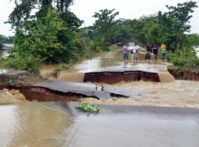-
Getting to Sustainable Palm Oil: A Hardware and Software Approach to a Market Problem
November 23, 2016 By Noel Taylor
The palm oil sector is at a crossroads. Despite growing awareness of its massive effects on deforestation, the largely unregulated and decentralized industry has struggled to adopt, follow, and document rigorous sustainable sourcing standards.
An area equivalent to 300 football fields of rainforest is cleared every hour to make way for palm oil production, according to WWF. The Roundtable on Sustainable Palm Oil, an industry-run initiative to self-regulate, certifies only 17 percent of all palm oil globally.
Meanwhile, satellite imagery reveals destruction of rainforests continuing at a steady pace. And environmentalists have linked palm oil production to habitat degradation for tigers and orangutans, climate change, and indigenous rights abuses.
But what if palm oil, like wine, came with clearly marked provenance and vintage? Not for the benefit of connoisseurs, but for consumers who want assurances that the palm oil they use in their skin moisturizers, cooking oil, and candy is sustainably sourced. Such a demand-driven approach could work, as it has for fair trade coffee and chocolate, conflict-free diamonds, and rainforest-certified wood. But the palm oil industry needs to bridge a huge data gap. It needs to be able to identify unsustainable farms and sustainable farms and track the production of each.
Sounds simple, but the challenges are formidable.
Records of land ownership are either non-existent, incomplete, or outdatedThe palm oil sector is concentrated in tropical countries that often don’t have a strong tradition of land governance. Consider Indonesia, the world’s largest producer of palm oil and largest archipelago, with over 17,000 islands. Huge swaths of the country are used for palm oil production, despite a five-year moratorium on palm oil concessions announced by the government earlier this year. An estimated 40 percent of Indonesia’s palm oil is produced by smallholders.
Smallholder farms and large plantations alike often occupy land that was until recently virgin forest and/or claimed by indigenous tribes. Records of land ownership dating back to this period are either non-existent, incomplete, or outdated. Ownership was customary rather than statutory and the government didn’t legally recognize its indigenous population until 2012. As a result, the government cannot identify which producers are farming on land that was home to an indigenous community or a forest, conditions which cover a great many producers.
Over the last 20 years, revolutions in our ability to track commodities and verify the sources of a supply chain have offered promise. But these innovative new tools – like blockchain technology and mobile money – require, as a foundation, accurate information about individual farmers, their land, and their communities. This information, which we call “data from behind the farm gate,” often doesn’t exist for the palm oil sector.
Now, a second wave of cutting-edge technology is aiming to fill this gap. Satellite imagery, drones, and GPS-enabled smartphones are helping determine farm boundaries, property history, land rights, farming practices, and socio-economic data.
Evidence of land and use rights is a critical component in sustainability. We know that without long-term tenure security, farmers tend to make short-term decisions and invest less in the land or soil’s long-term health.
Such detailed data can also form the foundation of smart rural development projects by providing governments data related to which inputs and farming techniques might improve a given farmer’s productivity, where governments should locate community services and infrastructure, and when farmers need access to finance.
Our databases enable third parties to gain valuable insightMy organization, Cadasta, with its partners, is using satellite and GPS-enabled technology to map slums in Nigeria, identify landless and homeless families in Bangladesh, and map farmers’ land holdings to strengthen their rights in India. What’s more, we’re looking to share our approach with as many partners as possible.
While the organizations collecting the data can determine if and how to share the data they collect, there is the potential for a tremendous ripple effect when they decide to open the data up to third parties and allow free access. Such databases can enable third parties, such as governments or NGOs like the One Acre Fund, Landesa, and Bill and Melinda Gates Foundation, to gain valuable insight into farm practices and challenges. This data can lead to better decision-making for both governments and NGOs as they work to strengthen land rights, improve access to financial services, monitor agricultural productivity, and provide more targeted government services and infrastructure.
Embracing innovative technology to gather intel from beyond the farm gate is an essential step for the palm oil industry to reverse its destructive impact and bolster its certification and enforcement regimes.
Let’s raise a glass of sustainable palm oil from the Amanah Association in Riau Province Indonesia – the first sustainably certified independent smallholder association – to putting all palm oil farmers on the map, literally and figuratively.
Noel Taylor is founder and CEO of Cadasta Foundation, a global non-profit that aims to simplify, modernize, and expedite the documentation of land and resource rights around the world.
Sources:
Photo Credit: A palm oil plantation in Indonesia, November 2010, courtesy of the Rainforest Action Network.
 A Publication of the Stimson Center.
A Publication of the Stimson Center.






